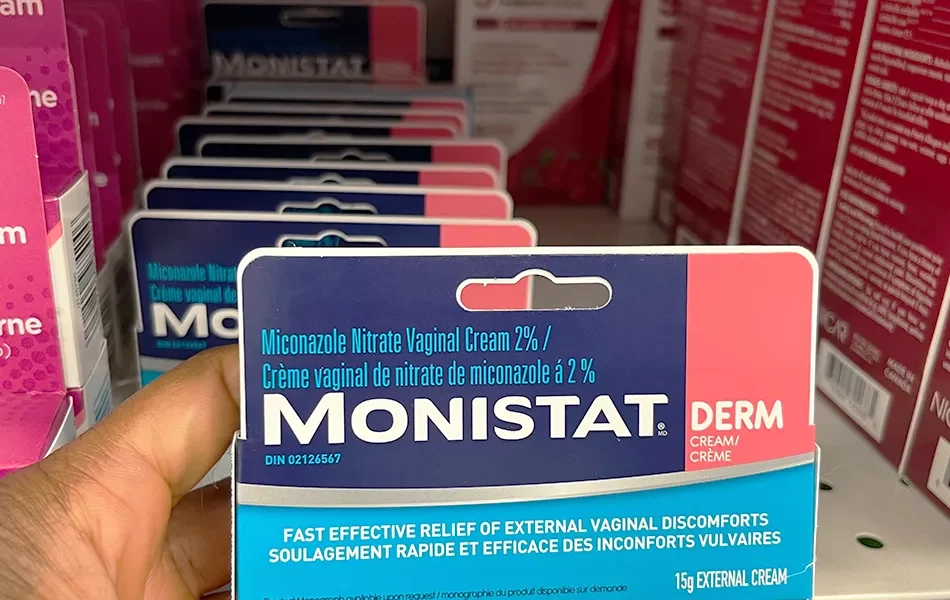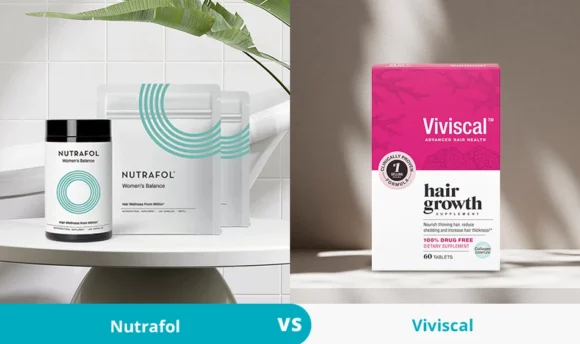Monistat for Hair Growth: Benefits, Side Effects, and Uses
Is antifungal medication the answer to hair regrowth and longer locks?

Monistat is an over-the-counter antifungal medication for treating vaginal yeast infections. Although it’s associated with women’s health, it also has a second and relatively newfound use. People now discuss Monistat as a potential solution for promoting hair growth.
Now, you’re probably wondering how an antifungal cream can benefit your hair health in any way. It seems like the last thing you might consider when thinking about your hair and how to boost growth. While it appears an unlikely choice, could you be missing out on a magical formula?
Read on to learn more about using Monistat for hair growth and other purported benefits.
Does Monistat Help With Hair Growth?
No solid scientific evidence supports the idea that Monistat works for hair growth. However, there is evidence to suggest that applying Monistat to the scalp may improve the scalp condition. With a healthy scalp, your hair follicles are in a better position to grow at a healthy rate.
The state of your scalp can influence your hair’s natural growth and retention. With this in mind, clearing up any fungal infections on your scalp, such as yeast infections, using an antifungal medication could allow your skin to return to normal and new growth to resume.
So, using Monistat could potentially and indirectly encourage hair growth. Nevertheless, more evidence is necessary before naming Monistat as the answer to slow-growing or thinning hair.
Are There Any Benefits of Monistat?
Much of the claims surrounding Monistat for hair growth stem from anecdotal evidence. But it does offer possible perks for your hair’s general health that may contribute to hair growth.
Below are two benefits you might acquire from using Monistat for your hair.
#1 May clear up fungal infections on the scalp
People believe Monistat may benefit their hair mainly because it contains the active ingredient miconazole nitrate. Miconazole nitrate is an antifungal agent that treats fungal diseases due to yeasts and dermatophytes that cause skin, hair, and nail infections.
Seborrheic dermatitis is one example of a fungal infection that causes scalp inflammation, dandruff, scaly patches, and a dry scalp. Antifungal creams and gels are the most common treatment options, and Monistat can potentially remove any fungi living on your scalp.
However, you should always talk to your doctor before trying medication for off-label use.
#2 May prevent hair loss
Sometimes, infection-related conditions are the culprit behind hair loss. In treating the infection, antifungal products may simultaneously treat hair loss and promote hair growth via a healthier scalp environment.
That said, the evidence associated with hair loss is linked to similar medications. For example, topical ketoconazole shows promise for treating hair loss and boosting hair regrowth in people with androgenetic alopecia.
Side Effects of Monistat on Hair
You might be tempted to try Monistat after reading about the above benefits, but it’s important to know that medication always comes with a risk for potential side effects.
As Monistat is used to treat yeast infections, it is safe for application to your most sensitive areas. Therefore, it seems unlikely to cause scalp irritation or other nasty side effects. Regardless, there is insufficient information to confirm its safety when applied to this area.
According to the Monistat website, these antifungal products may cause mild burning, itching, or irritation when used to treat yeast infections. They recommend speaking to a medical professional if symptoms become severe or if you develop hives or a skin rash.
A patch test will determine if your skin is sensitive to the product. Start by applying the formula to a small patch of scalp skin and wait for the results.
How to Use Monistat for Hair Growth?
You can use Monistat on your hair by applying the topical cream directly to the scalp or diluting the mixture with water to create a solution.
Here’s what to do:
Apply directly to the scalp
- Take the tube of Monistat cream and apply it directly to your scalp.
- Wearing latex gloves, use your fingers to cover your scalp with the product.
- Leave for around 15 minutes before rinsing thoroughly.
Apply using a spray bottle
- Dilute the Monistat cream with water in a ratio of 1:1. Add the solution to a spray bottle.
- Shake well to ensure it mixes thoroughly.
- Spray the solution onto your scalp at night before bedtime.
- Wear a shower cap overnight before rinsing thoroughly in the morning.
Monistat and Hair Types
Generally speaking, Monistat should work the same way, if at all, regardless of hair type. Many people swear by Monistat for their hair health, and it’s worth noting that most of these people have natural hair, meaning hair with its original texture and unaltered by chemicals.
Hair type aside, it seems that Monistat might work best for those battling with fungal infections on the scalp. It is unlikely to treat hair loss unrelated to scalp health, and it could do more harm than good for those experiencing hair loss from other causes.
FAQs
People tend to use Monistat topically at any time for approximately 15 minutes before washing their hair thoroughly. You can apply the formula before bedtime and leave it overnight if using a spray bottle containing Monistat diluted with water.
As little research supports using Monistat for hair, it’s best to use it sparingly. Try applying Monistat 1–2 times a week to see how it impacts your hair and scalp.
Monistat is available in different forms, including tablets and topical creams. Some of the suppositories have a hydrogenated vegetable oil base, but the cream products do not appear to contain oil.
Monistat may promote scalp health by clearing up fungal infections on the scalp, such as seborrheic dermatitis. This is because it contains the active ingredient miconazole nitrate, which works as an antifungal agent for vaginal, skin, and nail infections.
A Word From a Trichologist
Miconazole nitrate is the active ingredient in Monistat that works to treat fungal infections. It may help treat common scalp skin conditions, such as dandruff, seborrheic dermatitis, and scalp yeast infection caused by Candida fungus.
It is unclear whether Monistat helps the hair to grow.
As evidence is limited, you might prefer more reliable methods to promote hair growth. Good nutrition plays a vital role because it ensures your hair follicles receive the nutrients they need to function. A diet lacking essential vitamins and minerals can result in hair loss.
You should check your protein intake, perform scalp massages, and consider remedies with more evidence behind them, such as coconut oil and certain herbs. Talk to a healthcare professional about the best treatments if you’re dealing with male or female pattern hair loss.
Conclusion
Monistat has some properties that might improve your scalp health. The bad news is that whether the formula is an effective treatment for hair growth is still unclear. More clinical trials are needed to confirm how Monistat works as anything other than a yeast infection cream.

















































 Select your language:
Select your language: 








